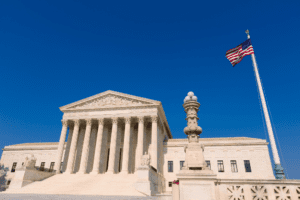 Justice Breyer continued: In particular, studies have shown that “may issue” licensing regimes, like New York’s, are associated with lower homicide rates and lower violent crime rates than “shall issue” licensing regimes. For example, one study compared homicide rates across all 50 States during the 25-year period from 1991 to 2015 and found that “shall issue” laws were associated with 6.5% higher total homicide rates, 8.6% higher firearm homicide rates, and 10.6% higher handgun homicide rates. Siegel, 107 Am. J. Pub. Health, at 1924–1925, 1927.
Justice Breyer continued: In particular, studies have shown that “may issue” licensing regimes, like New York’s, are associated with lower homicide rates and lower violent crime rates than “shall issue” licensing regimes. For example, one study compared homicide rates across all 50 States during the 25-year period from 1991 to 2015 and found that “shall issue” laws were associated with 6.5% higher total homicide rates, 8.6% higher firearm homicide rates, and 10.6% higher handgun homicide rates. Siegel, 107 Am. J. Pub. Health, at 1924–1925, 1927.
Another study longitudinally followed 33 States that had adopted “shall-issue” laws between 1981 and 2007 and found that the adoption of those laws was associated with a 13%–15% increase in rates of violent crime after 10 years. Donohue, 16 J. Empirical Legal Studies, at 200, 240. Numerous other studies show similar results. See, e.g., Siegel, 36 J. Rural Health, at 261 (finding that “may issue” laws are associated with 17% lower firearm homicide rates in large cities); C. Crifasi et al., Association Between Firearm Laws and Homicide in Urban Counties, 95 J. Urb. Health 383, 387 (2018) (finding that “shall issue” laws are associated with a 4% increase in firearm homicide rates in urban counties); M. Doucette, C. Crifasi, & S. Frattaroli, Right-to-Carry Laws and Firearm Workplace Homicides: A Longitudinal Analysis (1992– 2017), 109 Am. J. Pub. Health 1747, 1751 (Dec. 2019) (finding that States with “shall issue” laws between 1992 and 2017 experienced 29% higher rates of firearm-related workplace homicides); Brief for Social Scientists et al. as Amici Curiae 15–16, and nn. 17–20 (citing “thirteen . . . empirical papers from just the last few years linking [“shall issue”] laws to higher violent crime”).
Justice Alito points to competing empirical evidence that arrives at a different conclusion. Ante, at 3, n. 1 (concurring opinion). But these types of disagreements are exactly the sort that are better addressed by legislatures than courts. The Court today restricts the ability of legislatures to fulfill that role. It does so without knowing how New York’s law is administered in practice, how much discretion licensing officers in New York possess, or whether the proper cause standard differs across counties. And it does so without giving the State an opportunity to develop the evidentiary record to answer those questions. Yet it strikes down New York’s licensing regime as a violation of the Second Amendment.
It is disingenuous to state that Second Amendment issues should be left to the legislatures. It ignores how dysfunctional most of our legislatures are. It also ignores that the Second Amendment and the laws that touch upon it ultimately have to be analyzed by our courts. Our Legislatures do not have to enact any new gun laws or repeal any existing laws. Our courts are required to act on issues that are before them.
